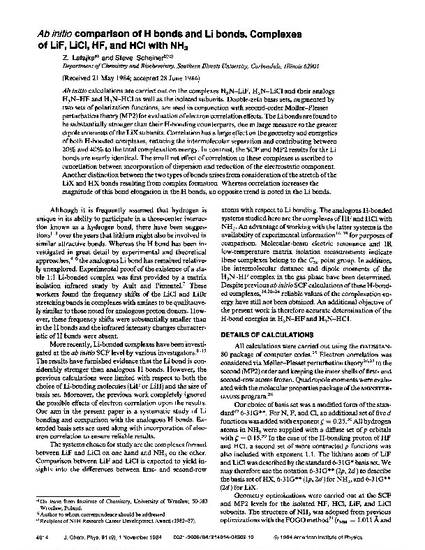
Ab initio calculations are carried out on the complexes H3N–LiF, H3N–LiCl and their analogs H3N–HF and H3N–HCl as well as the isolated subunits. Double‐zeta basis sets, augmented by two sets of polarization functions, are used in conjunction with second‐order Moller–Plesset perturbation theory (MP2) for evaluation of electron correlation effects. The Li bonds are found to be substantially stronger than their H‐bonding counterparts, due in large measure to the greater dipole moments of the LiX subunits. Correlation has a large effect on the geometry and energetics of both H‐bonded complexes, reducing the intermolecular separation and contributing between 20% and 40% to the total complexation energy. In contrast, the SCF and MP2 results for the Li bonds are nearly identical. The small net effect of correlation in these complexes is ascribed to cancellation between incorporation of dispersion and reduction of the electrostatic component. Another distinction between the two types of bonds arises from consideration of the stretch of the LiX and HX bonds resulting from complex formation. Whereas correlation increases the magnitude of this bond elongation in the H bonds, an opposite trend is noted in the Li bonds.

Originally published by American Institute of Physics in the Journal of Chemical Physics.
Publisher's PDF can be accessed through the remote link.